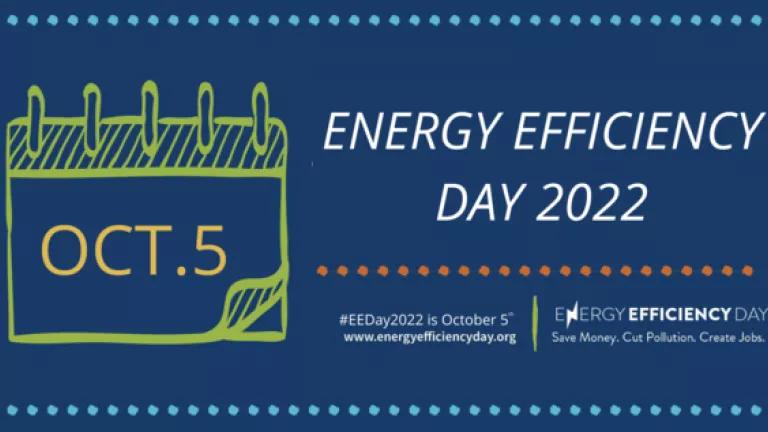DTE IRP: Find Out What It Means to MI

On the heels of the ambitious and recently approved Consumers Integrated Resource Plan (IRP), we shift to look at how DTE's IRP compares and what it will mean for the state.
Where Consumers put forward a "clean and lean" plan that was truly transformative in its commitment to increased energy efficiency and renewables for the long haul, DTE's plan feels both less ambitious and less committed on efficiency and renewables. Also, while Consumers put forward a singular clean energy vision, DTE proposed a plan with near term pursuits and a future open to multiple pathways that notably include large gas plants. Below is a comparison of a few major components of their plans.
*Note that for both utilities a new IRP must be conducted every five years, so the numbers below may change in the next IRP.
Energy Efficiency
|
Consumers Energy
|
DTE
|
|
2018 - 2019: 1.5%
2020 - 2029: 2%
2030 - 2040: 2.25%
|
2020: Ramp up to 1.625%
2021-2024: 1.75%
Open to multiple pathways, but possibly:
2025-2040: At least 1.75% maybe 2%
|
Consumers Energy looks to achieve higher levels of efficiency than ever seen before in the state. In DTE’s last IRP, filed two years ago, they said they couldn’t even sustain annual levels of 1.5% efficiency. So while this IRP's numbers show an improvement from the previous constraints, we believe DTE can pursue higher levels of efficiency. Expanding energy efficiency is a no-brainer that reins in rising electricity costs and saves customers, especially low-income customers who face a higher energy burden, money. Energy efficiency strategies include insulation, air sealing, and upgrades to heating and cooling equipment which not only improve outdoor air quality, but also help to improve the indoor air quality and health conditions of a home or building.
Renewables
|
Consumers Energy
|
DTE
|
|
By 2020: 550 MW of wind
By 2030: 5000 MW of new solar
By 2040: 6350 MW of total solar
|
By 2024: 11 MW of solar; 693 of wind
*Between 465 MW and 715 MW VGPP
Open to multiple pathways, but possibly:
2025-2030: Adding 525 MW of solar
*Maybe up to 675 MW VGPP
2040: 300 MW of wind and 2,000 MW of solar
|
Consumers Energy makes clear that they are committed to renewables now and into the future. DTE's choice to place so much emphasis on the voluntary green pricing program (VGPP), which is dependent on customers' renewable energy requests, seems to show a halfhearted interest in renewables. They shouldn't hide behind their customers and ask them to be clean energy leaders instead of the utility. Renewables must no longer be treated as a second thought, premium option, but as the cost-effective cornerstone they can be.
Coal Retirements
|
Consumers Energy
|
DTE
|
|
2023: Karn units 1 and 2 (secured in the approved settlement)
2031: Campbell units 1 and 2 and Karn units 3 and 4 (which will run on gas/fuel oil to meet peak)
2040: Campbell unit 3
|
2019: St. Clair unit 1
2020: River Rouge unit 3 switches to recycled industrial gases until full retirement in 2022
2022: St. Clair remaining units and Trenton Channel unit 9
Open to multiple pathways, but possibly:
2029/2030: Belle River
2040: Monroe
|
Both utilities plan to be coal free by 2040. In Consumers’ IRP, we pushed them for more transparency on the economics of their coal plants and earlier retirements. We will be pursuing the same with DTE and will continue to do so in each IRP. The swift retirement of coal plants is integral to better air quality, health improvements, and climate action.
Gas
|
Consumers Energy
|
DTE
|
|
No new gas plants.
|
Considering pathways with a 414 MW gas plant.
|
DTE outlines in detail their plan for the next five years, but for the following years opt to provide four flexible pathways, essentially kicking those items into their next IRP. Two of those flexible pathways stand out because they include 414 MW gas plants. Yes, this is on top of the 1,100 MW gas plant they are currently building. Consumers, on the other hand, did not propose any new large gas plants in the future. These large gas plants are a risky, costly, and unnecessary burden for customers. We should instead be capitalizing on clean, cost-effective energy efficiency and renewables in the near term to avoid the need for any gas plants.
You Get Out What You Put In
As part of the active case, NRDC and other participants in the case will be evaluating DTE’s final plan and unpacking the inputs that led to it. We will be exploring if DTE met the statutory requirements, critiquing how they address their planning principles, scrutinizing data assumptions and modeling, and then assessing how to remedy what we see to be the biggest flaws. If costs are off, modeling is constrained, or resources are limited, it can deeply impact the final path chosen.

Make Your Voice Heard
It appears that thanks to many community groups speaking up and asking for more meaningful opportunities to engage on these issues, the Commission has scheduled a community forum in Detroit to provide an opportunity for DTE customers to comment on DTE’s IRP. Commission Chairman Sally Talberg herself noted the importance of the Commission hearing from southeast Michigan residents and sees the event as a chance for customers to offer their views on DTE’s proposal, as well as talk with Commissioners and Commission staff. Chairman Talberg will be joined by fellow Commissioners Norm Saari and Dan Scripps and Commission staff. They will give a presentation about the planning process and share highlights of DTE’s plan. Please attend if you can and make your voice heard!
Event Details
What: Community information and listening session
When: June 20, 2019 from 4:00-5:30 p.m. and 5:45-7:00 p.m.
Where: Frank Hayden Community Room, Wayne County Community College District – Downtown Campus, 1001 West Fort Street, Detroit, Michigan 48226
Who: Michigan Public Service Commission members and Commission staff
People who have mobility, visual, hearing, or other disabilities should contact the MPSC’s Executive Secretary at 517-284-8090 in advance of the forum to request assistance.
For more general information about the Commission: see my primer blog, visit their website, follow the Commission on Twitter, or watch a livestream of the MPSC’s meetings.




